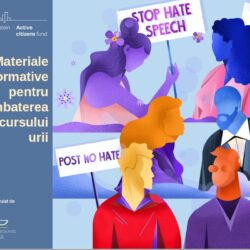Sexuality Education in School. From Non-discrimination to Information and Diversity
Sexuality Education is the subject of many discussions, of many taboos, of much information, often incorrect or incomplete and, at the same time, of many myths. For the purpose of this article, I will refer to it as Health Education, which is the official term used in Romania since 2004, when, at the school’s decision, this optional course was introduced into the school curricula.
Short local context:
The year 2013 places Romania on the first place in Europe by the number of new HIV infections among young people with ages between 15 years old and 24 years old (ECDC: Surveillance Report. HIV/AIDS surveillance in Europe).
In 2014 there were 17,877 births registered among girls with ages between 15 years old and 19 years old (INSEE – Anuarul Statistic 2015).
Also, in 2014 there were 661 births registered among girls with ages under 15 years old (INSEE – Anuarul Statistic 2015).
In addition to the presented data, there are countless cases of sexually transmitted infections, of sexual abuse, of discrimination based on sex, gender, sexual orientation or ethnicity.
But what is this Health Education in Romania and how should it look?
We have Health Education as an optional course, a course which has a Reproduction Health component. Within it, according to the school curricula revised in 2004, issues related to sexual and reproductive health are addressed - hygiene, sexually transmitted infections, contraception, sexual abuse. Although it is an important start, the problem is that the focus is on information concerning the biological part, while the other defining factors are missing.
Making a comparison between the Sexuality Education component from the Health Education course and a Comprehensive Sexuality Education model, we can notice major differences. A lot of important information doesn’t exist or there is a complete lack of subjects concerning gender, discrimination, contraception, family (except for the traditional one, composed of mother, father, child and sometimes grandparents), abuse or rights.
Also, there are no textbooks approved by the Ministry of National Education.
But, to get to the part about what Health Education should be like and how it influences the subject of discrimination, I will put an end to the presentation about what we have and I will pass on to what should happen.
Comprehensive Sexuality Education “must help young people in accessing accurate information, in developing life skills and in harboring positive attitudes and thoughts. Firstly, young people must know their sexual and reproductive rights, they must have the necessary information to fight against myths and they must know the resources and services they can turn to. In terms of life skills that young people must develop through Comprehensive Sexuality Education, they are varied and include: critical thinking, communication and negotiation, personal development, decision making, trust, responsibility, the ability to ask questions and seek help, empathy. Not lastly, the attitudes and values are: openness to new, self-respect and respect for others, self-esteem, comfort, non-discriminatory attitudes, sense of responsibility, a positive attitude towards sexual and reproductive health. Comprehensive Sexuality Education contributes to the formation of a proactive behavior, based on respect for human rights.” (Analysis report of the optional course Health Education, the Sexuality Education component. Brumariu, Suciu, 2015)
According to IPPF (International Planned Parenthood Federation, IPPF Framework for Comprehensive Sexuality Education, 2010), the seven essential components of Comprehensive Sexuality Education are: gender, sexual and reproductive health and HIV, sexual rights and sexual citizenship, pleasure, violence, diversity and relationships.
Comprehensive Sexuality Education deals with themes that are often encountered in society and that raise anatomical problems, as well as social and moral problems. Such a course completes the spectrum of universal education and forms, with responsibility and adaptation, by age categories, responsible and healthy attitudes, a clearer understanding and informing, an empowerment of young people and, last but not least, it forms a less discriminating society.
Therefore, I think that it is time for such a course to appear as a real option for each student. It is both brick and cement for this temple that is built in school and that must benefit from rights, health and values, both in childhood, adolescence and adulthood alike. It is time to stop from sacrificing generations for extremism, for votes or for personal beliefs.
Gabriel Brumariu
I have a master degree in anthropology, my academic passion. I’ve started working in the field of sexual and reproductive health (my activism passion) as a volunteer. After approximately two years I became the coordinator of the youth program with the Societatea de Educație Contraceptivă și Sexuală (Contraceptive and Sexual Education Society). I love holding information sessions in schools; not in front of the students though, but among them.









